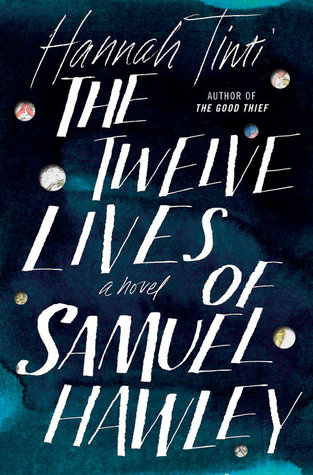
Twelve Lives
The Twelve Lives of Samuel Hawley (The Dial Press) is a violent book. It’s a book about guns and gun culture, revenge, paranoia, and murder.
It’s a book about family. The story of a father and daughter, a wife lost too soon, and a grandmother who wants to be nearer to her granddaughter to keep a sense of that lost daughter.
It’s these two worlds that make Hannah Tinti’s first novel in 10 years so compelling. It is the world we live in today, one consumed by compassion and devotion, anger and violence. Her storyline can be so authentic at times that I had to put the book down and walk away. As the news and social media fed me a steady diet of all that is wrong with our society, I didn’t want it from a novel I’d chosen for escape. But I’d go back to it because the pull of the story of Hawley and his daughter, Loo, as they struggle to survive as a team in the world he’s made for them is too strong.
Sam works as a collector, traveling the country taking back merchandise or cash from those who have stolen from powerful and corrupt people. That merchandise is collected by any means necessary, most often violently. It’s the sort of life that leaves in its wake grudges and vendettas like a map of stars across the night sky.
The structure of the book breaks every other chapter into the story of a bullet in Hawley’s life — 12 in all. As a writer, when I first began reading this book, I thought, “Why 12? Why not make it easier on yourself with, say, six bullets?” But Hawley’s life is measured by these bullets as they pass through his body. And Hawley passes through his life the same way — messily, violently, bloody. He tears at flesh and the fabric of a decent society as he moves from one job to the next.
He and Loo move from place to place, often at a moment’s notice, taking along whatever they can fit in a piece of luggage. There are other ways to measure time — a shampoo bottle, lipstick, a handwritten shopping list, a bathrobe, snapshots. Hawley carries these items of his wife’s, long dead now, from place to place, scraps of memory he arranges into a shrine at every stop along the way. This is how Hawley finds his way back to Lily.
Hawley’s longtime friend and partner in crime tells Loo, “Watches used to be important. When you got your first, it was special. A reminder of the days you had left, ticking away right there on your arm.”
Hawley knows from the beginning that his days are numbered, ticking away, and he wants to quit for his daughter’s sake. Violence begets violence. But simply retiring isn’t an option, and he works backward through time, tracing his wounds to the men who caused them like following the constellations to eradicate any future threat. Tinti writes: “What a mess he’d made, Hawley thought. He wished he could erase his entire life, starting with his father’s death and then every step that had led him here to this crap motel room, every bullet, every twisted turn of the road he’d followed — even meeting Lily, even having Loo. Hawley wanted it all gone.”
I want to finish by saying that, while Samuel Hawley is violent — and let’s make no bones about it, he is a bad dude — his devotion to his daughter is without question. And because he loves his daughter so much, he’s raising her to be a strong and independent woman. He may be going about it in the extreme — the book opens with Hawley teaching a 12-year-old Loo how to shoot a rifle — but it’s a lesson for all of us: If we love and respect our daughters, we must raise them to resist when society seeks to undermine their strength. Sam gets that, flawed though he may be.
